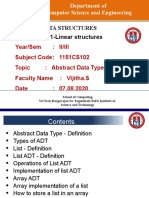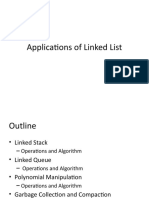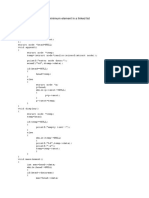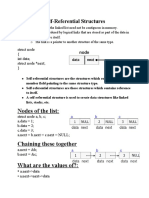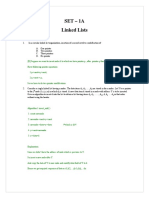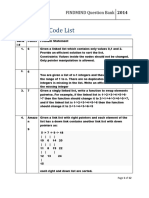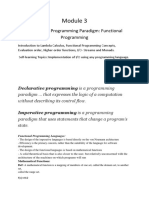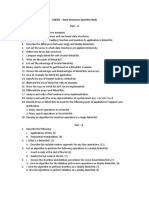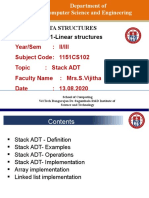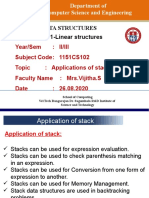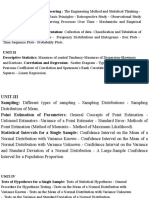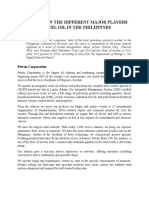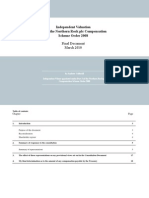0% found this document useful (0 votes)
228 views59 pagesCircular Linked List
The document discusses circular linked lists. It defines a circular linked list as a linked list where all nodes are connected to form a circle, with no NULL at the end. The key points covered include:
- Operations on a circular linked list like insertion, deletion, and display. Insertion and deletion can be done at the beginning, end, or a specific location in the list.
- Implementation details for inserting a node at the beginning, end, or after a specific node in the list. It also provides details on deleting a node from the beginning or end of the list.
- Uses of circular linked lists like representing naturally circular arrays and providing easy access between first and last nodes by following one link.
Uploaded by
Tom JonesCopyright
© © All Rights Reserved
We take content rights seriously. If you suspect this is your content, claim it here.
Available Formats
Download as PPTX, PDF, TXT or read online on Scribd
0% found this document useful (0 votes)
228 views59 pagesCircular Linked List
The document discusses circular linked lists. It defines a circular linked list as a linked list where all nodes are connected to form a circle, with no NULL at the end. The key points covered include:
- Operations on a circular linked list like insertion, deletion, and display. Insertion and deletion can be done at the beginning, end, or a specific location in the list.
- Implementation details for inserting a node at the beginning, end, or after a specific node in the list. It also provides details on deleting a node from the beginning or end of the list.
- Uses of circular linked lists like representing naturally circular arrays and providing easy access between first and last nodes by following one link.
Uploaded by
Tom JonesCopyright
© © All Rights Reserved
We take content rights seriously. If you suspect this is your content, claim it here.
Available Formats
Download as PPTX, PDF, TXT or read online on Scribd
/ 59

